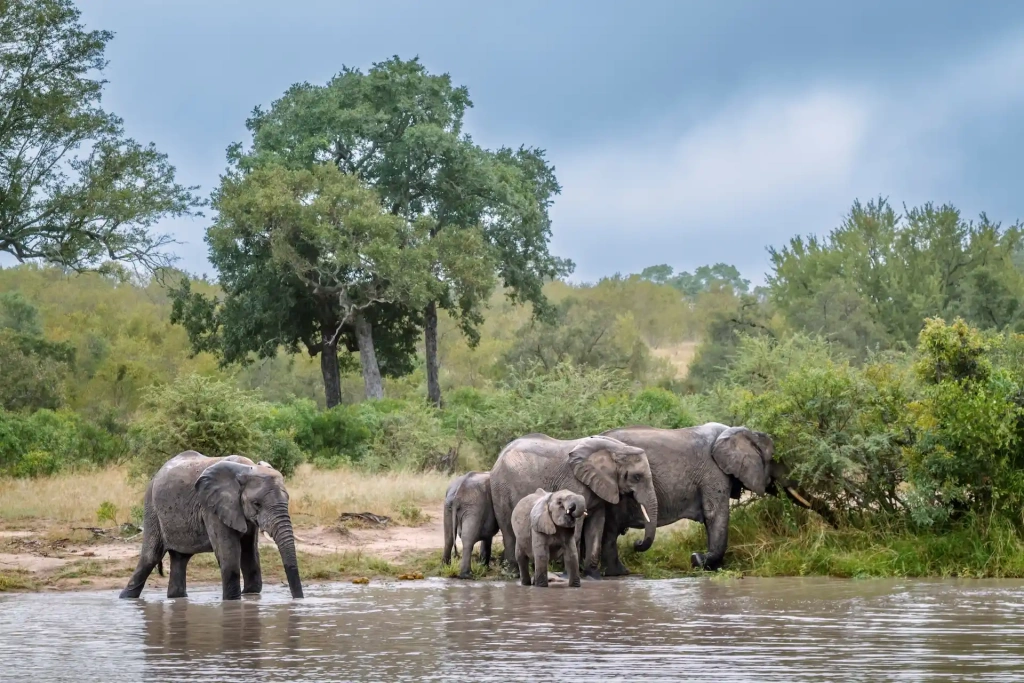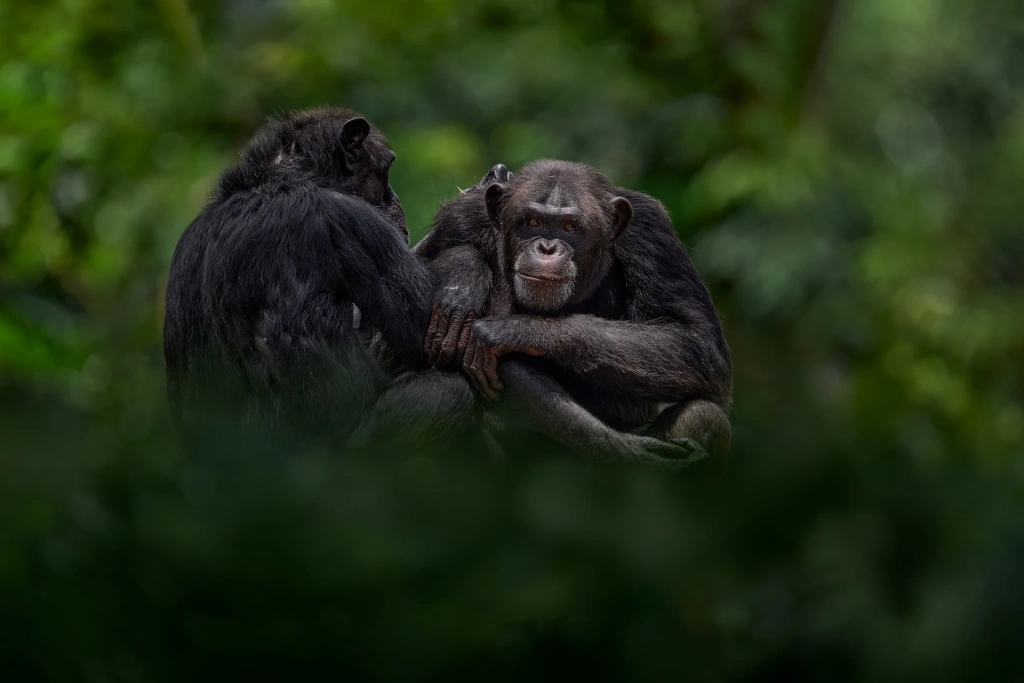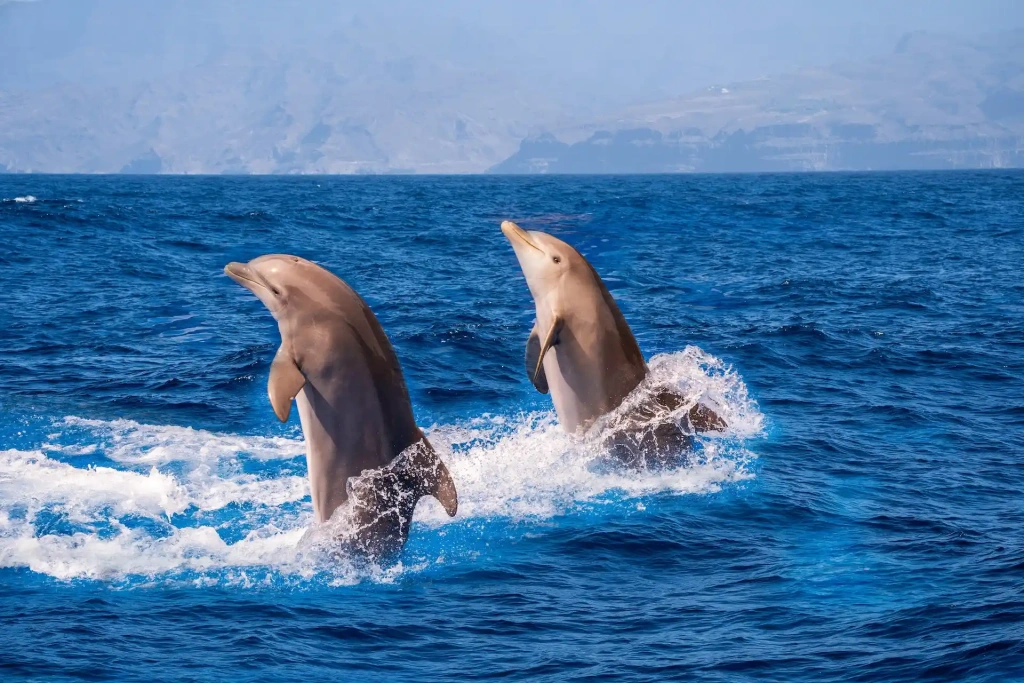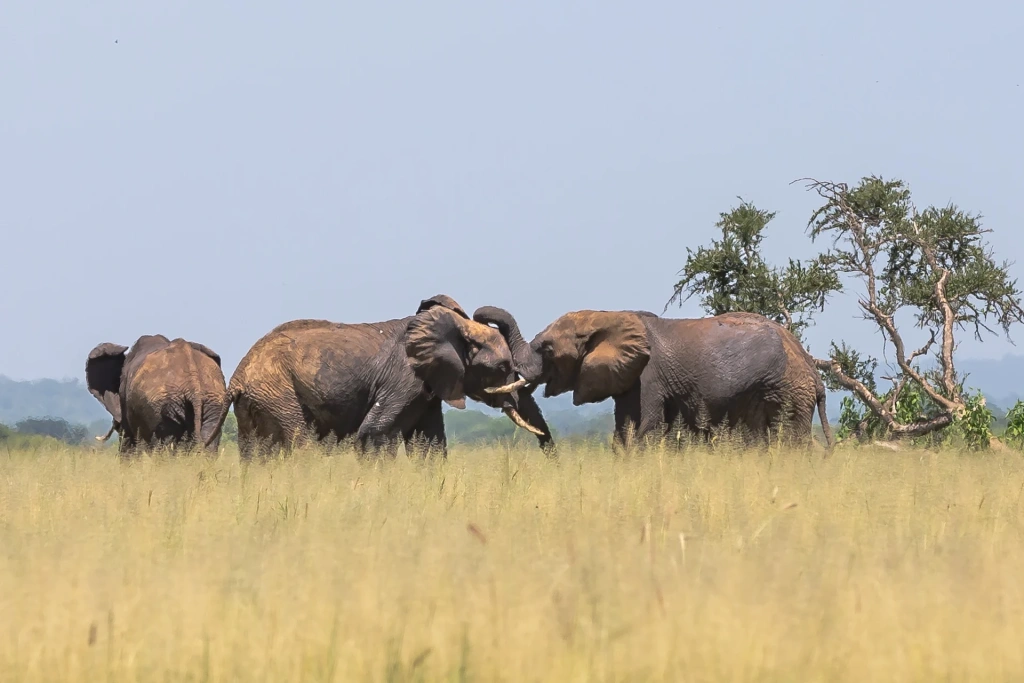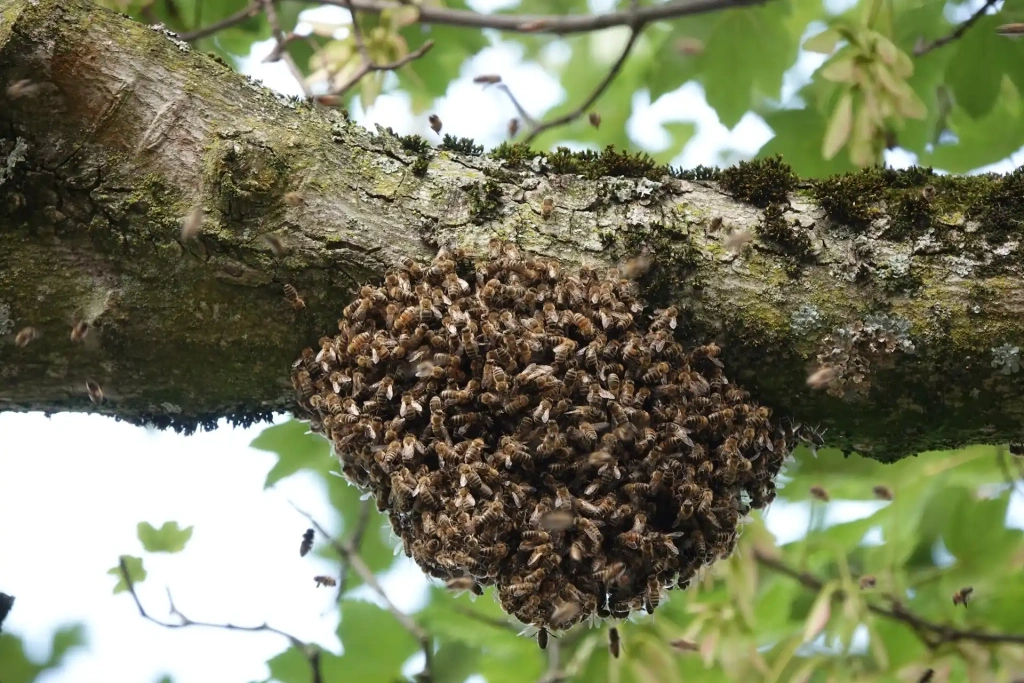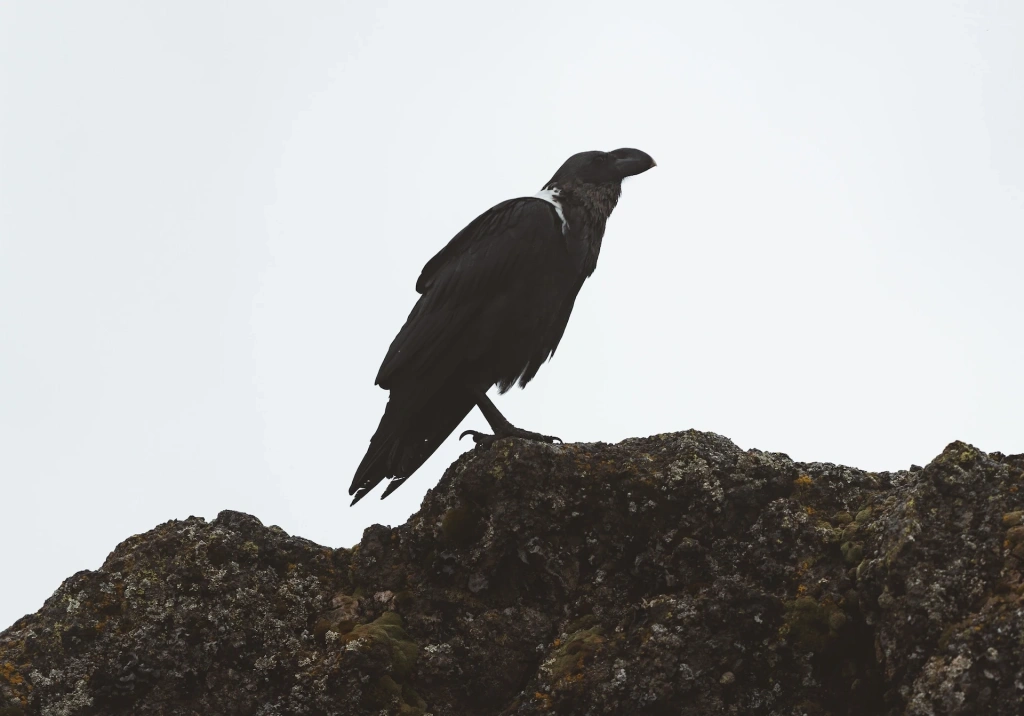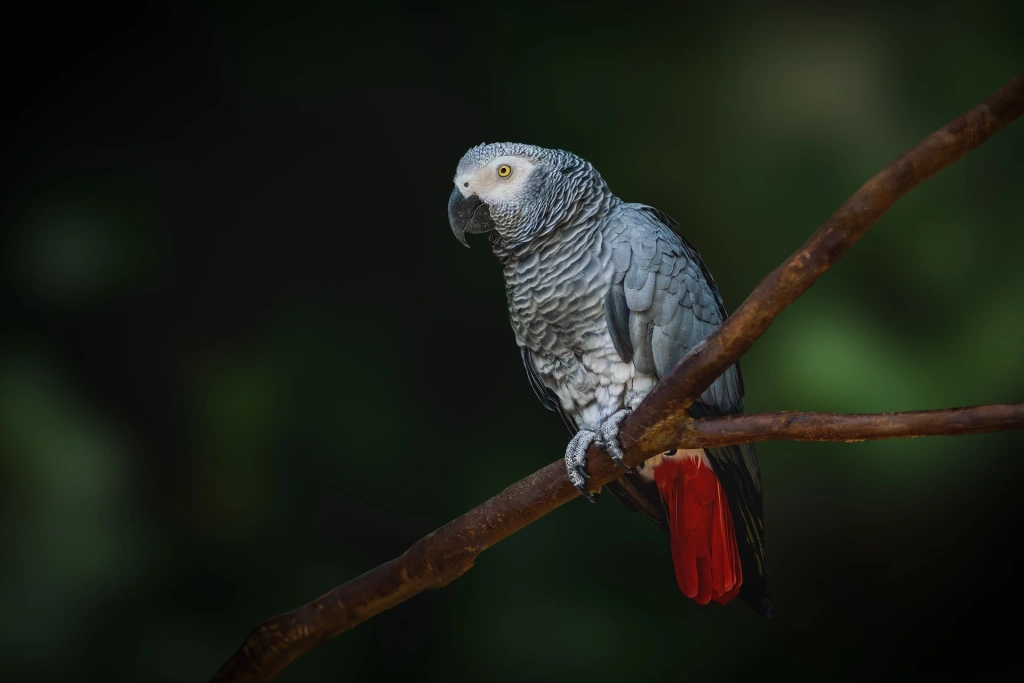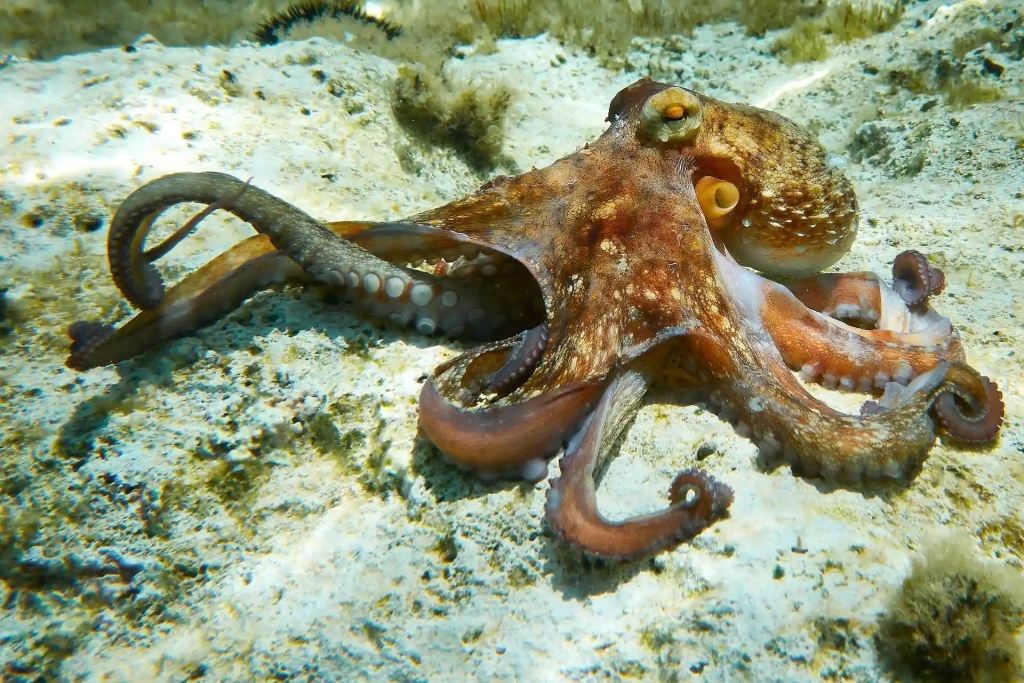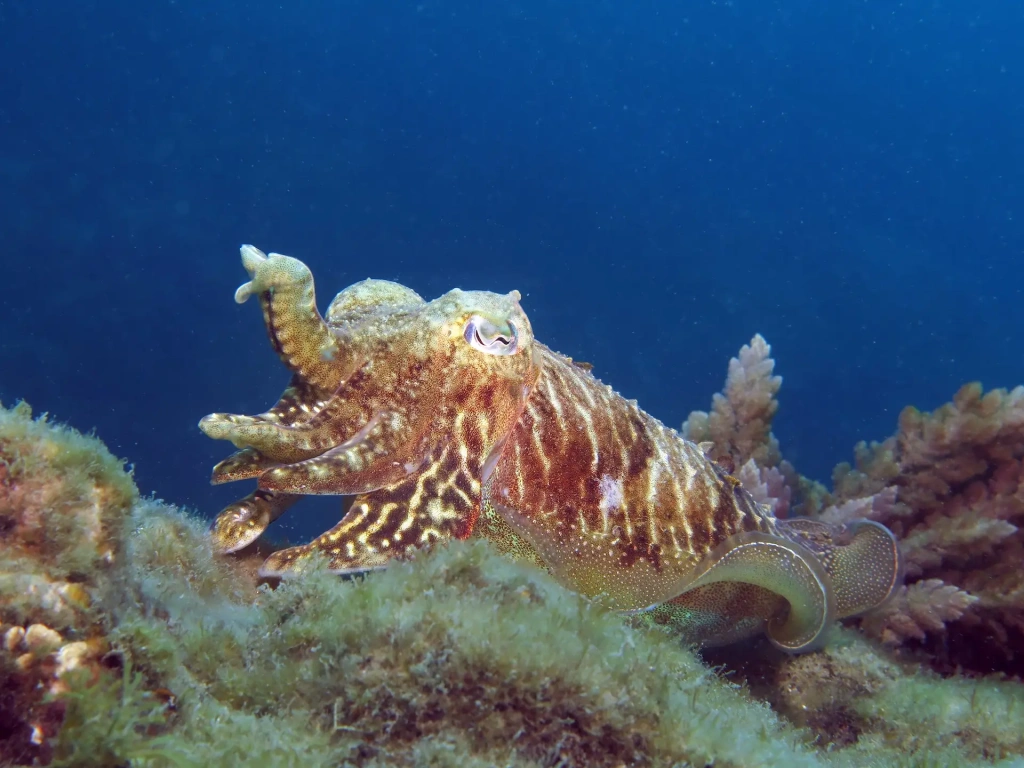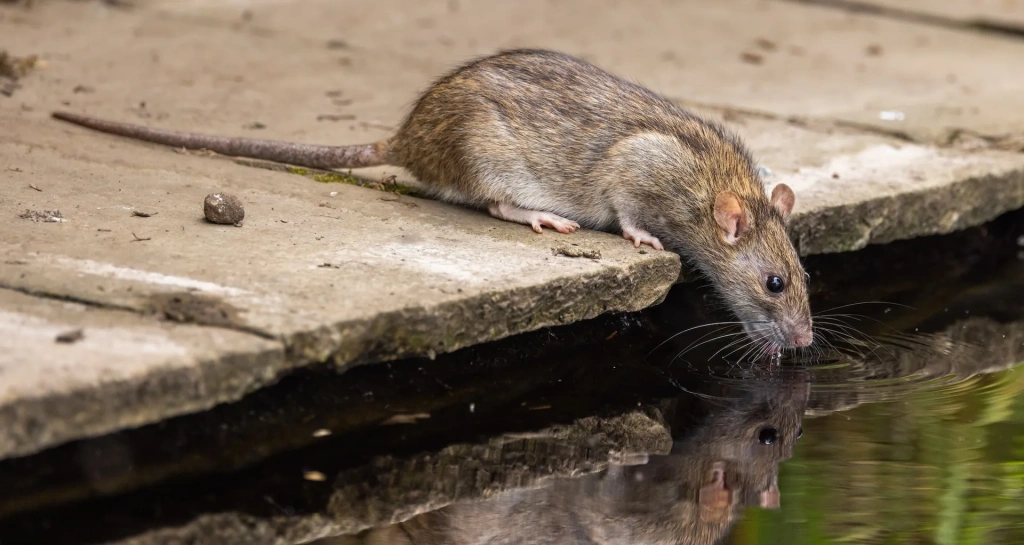For centuries, people believed that true intelligence was unique to humans. But modern research shows otherwise — many animals, from elephants and dolphins to bees, octopuses, and birds, are far smarter than we once imagined. Some can remember hundreds of hidden food spots or even call each other by name. Others solve puzzles, recognize their reflections, and show hints of creativity.
In this Altezza Travel article, we explore the planet’s most intelligent animals and how their abilities challenge our understanding of the animal mind’s limits.
Smartest animals
1. Monkeys
Chimpanzees
Chimpanzees carefully select tools for specific tasks. In 1960, the renowned primatologist Jane Goodall began studying their behavior in Gombe Stream National Park in Tanzania. She observed how they use branches and leaves to extract termites and collect water, share food, and recognize familiar individuals. They can also solve simple problems, like remembering where food is hidden or choosing the handful with the most treats.
Research by Swiss primatologist Christophe Boesch later showed that each chimpanzee population has its own unique ways of using tools, and these skills are passed down through generations, much like they are in humans.
Orangutans
Orangutans are highly intelligent animals, capable of planning ahead. Scientists Nicholas Mulcahy and Josep Call from the Max Planck Institute for Evolutionary Anthropology in Germany presented them with a selection of objects, some useless, others that could serve as tools. Later, the orangutans were shown a transparent container filled with juice that could only be opened using one of those tools. They remembered which one they had chosen and used it successfully. The time between selecting the tool and solving the task ranged from one to fourteen hours. In scientific terms, this ability is known as foresight — the capacity to act in the present for a future reward.
Another experiment revealed that orangutans also demonstrate a skill called affective . When offered different juices and asked to anticipate how they would like certain flavor combinations, the orangutans made accurate choices — a talent once thought to be uniquely human.
Capuchins
Capuchins show signs of understanding the concept of fairness. In one experiment, two capuchins were asked to perform the same task, but one received a cucumber as a reward while the other received a grape. As soon as the first monkey noticed it was getting the less valuable treat, it began to protest, refusing the food and stopping the task. When the rewards were made equal, the monkey eagerly resumed working. This study became one of the first and most convincing pieces of evidence that monkeys possess a sense of fairness.
2. Dolphins
Dolphins live in complex social groups, can recognize their peers, interact intentionally with humans, and have impressive memories. In the early 2000s, at a marine laboratory in Honolulu, Hawaii, American scientists Adam Pack and Louis Herman studied how well bottlenose dolphins could interpret human signals. Two dolphins were shown several objects, and the researcher pointed to one using both gesture and gaze. In most cases, the dolphins correctly identified the object by reading the human gesture and gaze.
Another remarkable feature is their acoustic memory and communication system. Each dolphin has its own unique whistle, essentially a name that other dolphins use to recognize them. Dolphins can even imitate another’s whistle to get their attention. Their memory for these signals is extraordinary: experiments show they can recognize these names even after being separated for 20 years.
3. Elephants
Asian elephants
In 2006, scientists at the Bronx Zoo in New York conducted a striking experiment. They placed a large mirror in front of several elephants and applied a bright red mark to their foreheads. One female, looking at her reflection, touched her forehead with her trunk, right where the mark was.
The mirror test is widely seen as a sign of self-awareness and has been observed in humans, great apes, dolphins, and some birds. This experiment provided more evidence of elephants’ advanced intelligence and inspired further studies on their memory, social bonds, and empathy. Elephants are known to comfort and support each other and even grieve the loss of herd members.
African savannah elephants
Elephants navigate vast territories with remarkable accuracy. They remember the locations of water and food sources for many years and can lead the herd to them even if the landscape has changed significantly — for example, after droughts or fires.
These animals communicate using acoustic “names” and infrasound — low-frequency signals inaudible to human ears. Such messages help the herd coordinate movement and warn of danger across several kilometers (or a few miles).
African elephants also have a unique ability to distinguish human speech and assess potential threats. In an experiment in Kenya’s Amboseli National Park, researchers played recordings of conversations from different ethnic groups: the Maasai, who sometimes have conflicts with elephants, and the Kamba, who pose no threat. When hearing Maasai voices, particularly male voices, the elephants huddled together and showed clear signs of alarm, while they barely reacted to Kamba speech.
4. Honeybees
Bees are highly organized insects that navigate with ease, remember the locations of flowering plants, and share this information with each other. They do this through the famous “waggle dance,” which communicates the direction and distance to food sources using the sun as a reference. For decoding this remarkable behavior, Austrian scientist Karl von Frisch was awarded the Nobel Prize in 1973.
One of the most surprising discoveries is that bees have basic arithmetic abilities. In 2018, scientists found that bees can associate colors with simple math operations: blue indicated adding one, while yellow signaled subtraction. The insects correctly selected objects with the corresponding number of elements, showing that they can grasp basic numerical concepts.
5. Crows
New Caledonian Crows
This species is considered one of the most inventive among corvids. At Oxford University, New Caledonian crows were given a task to retrieve food from a tube. They could choose from several sticks of different thicknesses or a bundle of twigs. The crows chose the stick that best fit the tube or pulled a suitable twig from the bundle.
In another experiment, a crow bent a piece of wire into a hook to extract food, even though it had never been shown how to do so. This study provided some of the most substantial evidence that these birds can consciously adapt objects for specific tasks. Moreover, they pass these skills on by observing and imitating one another — abilities once thought to be unique to primates.
American Crows
Researcher and engineer Joshua Klein designed a type of vending machine that dispensed nuts when a coin was inserted. He trained American crows to use it, and the birds quickly learned the exchange rule, showing their ability to grasp new rules and apply them for their own benefit.
Another experiment at the University of Washington explored long-term memory and knowledge transfer within the group. Scientists captured crows while wearing special masks. Later, when they appeared again without any traps, the crows raised the alarm upon seeing the dangerous masks, associating them with the earlier unpleasant experience, and warned other birds. Remarkably, this response even spread to crows that had never personally encountered the capture, providing strong evidence that crows can pass on knowledge and experience within their flock.
6. African Grey Parrots
African Grey Parrots are highly intelligent birds, quick to notice changes in their surroundings and respond with remarkable awareness. Experiments have also revealed their capacity for broader, abstract thinking.
Scientist Irene Pepperberg spent more than ten years training the parrot Alex to associate words with objects, including their color, shape, and quantity. In the late 1980s, she presented Alex with an empty tray. He said the word “none,” showing that he understood the concept of absence itself — and was not simply repeating a familiar sound.
In other experiments, Alex was shown pairs of objects and asked whether they were the same or different. He consistently answered correctly, demonstrating abstract thinking: the ability not only to recognize objects individually but also to compare them by color or shape.
7. Octopuses
Octopuses, also considered animals with high cognitive abilities, have the most complex nervous system of any invertebrate. About two-thirds of their nerve cells are located not in the brain but in their arms, allowing them to coordinate all eight limbs with ease. In experiments, octopuses were placed in aquariums with closed jars and containers of food. At first, they acted randomly, but over time, they developed a sequence of actions, opening lids and clasps, and gradually needed less time to complete the tasks, showing clear learning ability.
They can remember what they’ve learned for more than three months. Forgetting begins gradually: after one week, 25% is forgotten; after 24 days, 50%; after 53 days, 75%; and after 96 days, 90%. For an invertebrate, however, this counts as true long-term memory.
8. Cuttlefish
Cuttlefish are mollusks with a remarkable ability to analyze situations. They not only camouflage themselves perfectly but also display behaviors once thought to be unique to vertebrates.
Scientists from Cambridge University offered cuttlefish two choices: a small portion of raw king prawn immediately, or a whole live grass prawn later. Over time, the animals learned to forgo the quick but less desirable reward. Scientists see this ability to wait for a future benefit as an important foundation for more complex forms of thinking.
9. Gray rats
Rats are capable of finding alternative routes to food, opening simple locks, and experimenting with different actions until they succeed. In 2023, researchers at the Howard Hughes Medical Institute discovered that rats can also form mental images of places, showing that they may be capable of imagination.
In the experiment, a rat was placed on a freely rotating ball, creating a treadmill effect. Surrounding screens displayed the image of a corridor, making it appear as if the rat were running through it. As the rat moved, the ball rotated and the images shifted in sync, simulating travel along a virtual path. The rat wore a lightweight helmet with sensors recording brain activity. Even when the rat stopped, its brain continued to map the path ahead, as if it were mentally moving forward. This discovery offers a new perspective on imagination — a trait once thought to be uniquely human.
F.A.Q.
Which animal is considered the smartest in the world?
Chimpanzees and dolphins. Chimpanzees use tools, remember past events, learn from one another, and display social intelligence. Dolphins, meanwhile, communicate through signals, recognize themselves in mirrors, and interact intentionally with humans.
Which animal has the highest IQ?
While IQ isn’t measured in animals in the usual sense, the most intelligent species are generally considered to be chimpanzees, dolphins, and elephants. Surprising contenders include crows and cuttlefish, which can solve problems requiring logic and memory.
Which animal has the largest brain?
The sperm whale has the largest brain, weighing around 8 kg (17.6 lbs). By comparison, a chimpanzee’s brain weighs about 400 g (0.88 lbs), and a human brain around 1.3 kg (2.9 lbs). Yet, humans and apes show the greatest intellect, proving that brain size alone doesn’t determine intelligence
Which animal shows the most advanced thinking?
Chimpanzees, dolphins, and crows are among the top thinkers. Elephants show impressive memory and empathy, pigs can learn and plan strategies, and cuttlefish demonstrate self-control. Each species has its own unique strengths, but the animals whose thinking most closely resembles humans are primates and dolphins.
All content on Altezza Travel is created with expert insights and thorough research, in line with our Editorial Policy.
Want to know more about Tanzania adventures?
Get in touch with our team! We've explored all the top destinations across Tanzania. Our Kilimanjaro-based adventure consultants are ready to share tips and help you plan your unforgettable journey.















